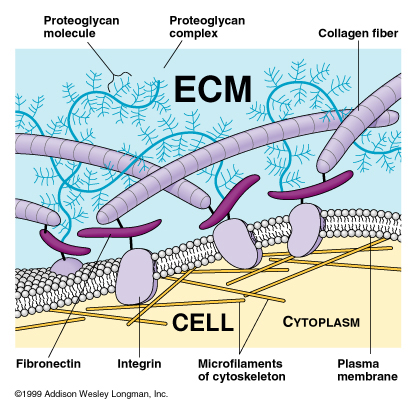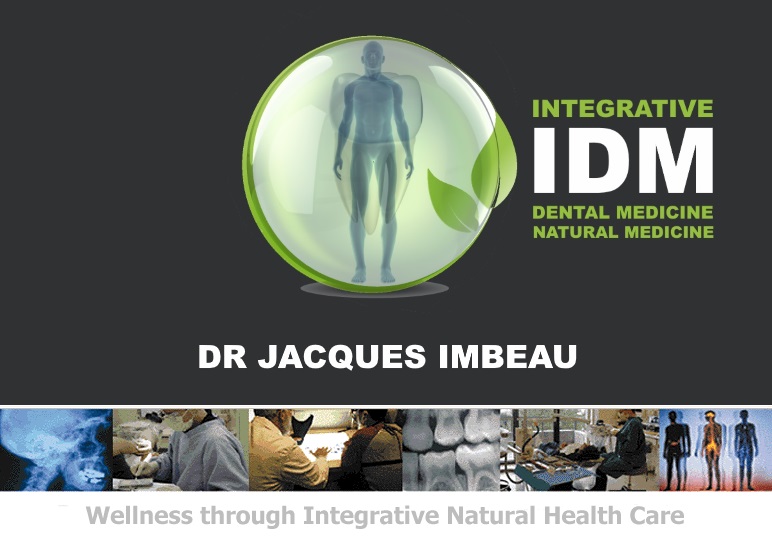What
is the Extra-Cellular Matrix ( ECM ) ?
|
The ECM is the living
environment of your cells in the same way that
the village or town you live in is your living
environment.
The
build-up of toxicants in the ECM will result in
cellular disease and eventually dedifferentiation
since toxins in the extra-cellular matrix can
disrupt the intra-cellular matrix and even the
intranuclear matrix, so that disease can develop
even if the toxin is not directly in that
location. You can easily image that people living
in a very polluted environment will be
increasingly prone to various diseases, including
cancer ( cellular dedifferentiation ) . The same
is true for your own cells.
From
a scientific perspective, the extracellular
matrix is a complex structural tissue component surrounding
and supporting cells in
human tissues. The ECM is often referred to as
the connective tissue and has many key functions,
including:
1) Mechanical
support for cells and tissues.
2) Influences
cell shape,
cell movement,
cell development
and cell differentiation.
3) Coordinates
cellular functions through
signalling with cellular adhesion receptors.
4) Reservoir
for extracellular signaling molecules.
Thus
a healthy, functional ECM is very important for
cell health.
The
ECM is composed of 3 major classes of molecules:
1)
Structural proteins - collagen and elastin,
2)
Specialized proteins - such as: fibrillin,
fibronectin, and laminin and
3)
Proteoglycans - complex proteins and long chains
of repeating disaccharide units called
glycosaminoglycans (GAGs, such as: hyaluronic
acid, chondroitin sulfate, heparin, heparan
sulfate).
Collagens
are the most abundant proteins found in the
animal kingdom. It is the major protein
comprising the ECM. There are at least 12 types
of collagen. Collagens are predominantly formed
by fibroblasts but epithelial cells also
synthesize these proteins. Fibronectins attach
cells to a variety of extracellular matrices.
Fibronectin attaches cells to all matrices except
type IV that involves laminin as the adhesive
molecule. Laminin anchors cell surfaces to the
basal lamina. All basal laminae contain a common
set of proteins and GAGs. These are type IV
collagen, heparan sulfate proteoglycans, entactin
and laminin. The basal lamina is often referred
to as the type IV matrix. Many cells bind to
components of the extracellular matrix. The cell
to ECM adhesion is regulated by specific cell
surface cellular adhesion molecules (CAM) known
as integrins. The integrins transmit mechanical
stimuli from the ECM to the cytoskeleton.

|

